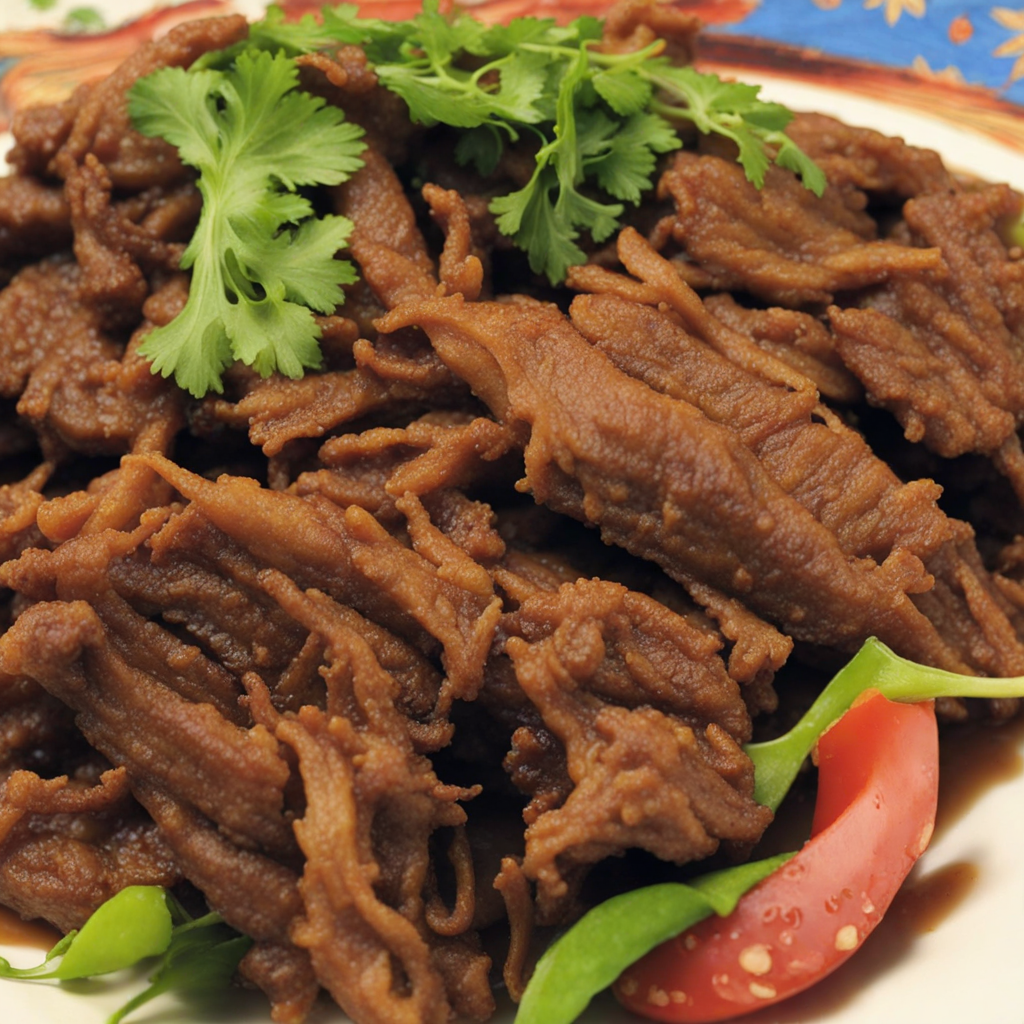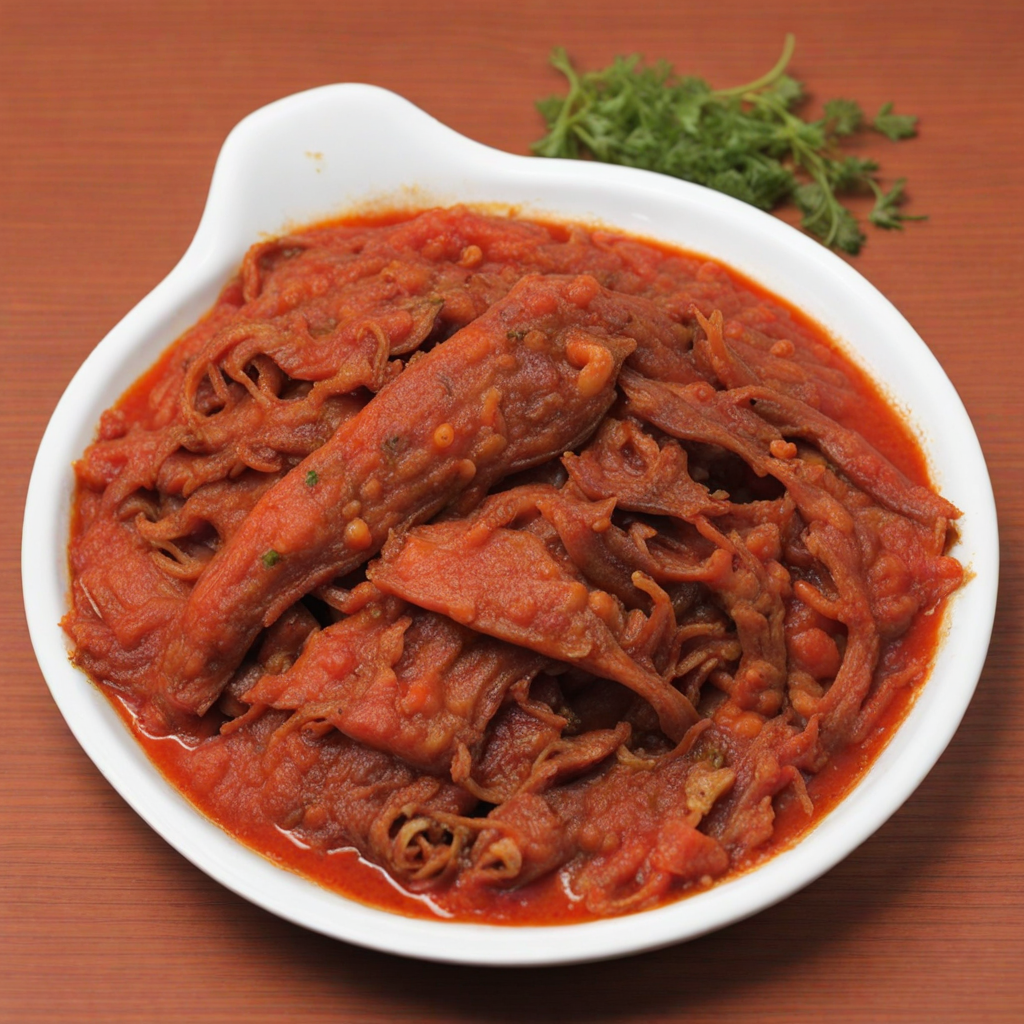Chitenje Cha Nkhomaliro
Chitenje Cha Nkhomaliro is a delightful Malawian dish that showcases the rich culinary heritage of this East African nation. At its core, it consists of a unique blend of flavors and textures that come together to create a memorable dining experience. The dish typically features a base of starchy ingredients, such as ground maize or cassava, which are cooked to a soft, comforting consistency. This starchy foundation is often accompanied by a variety of vegetables, such as leafy greens, tomatoes, and onions, providing a burst of freshness and color. The careful balancing of these elements results in a satisfying meal that is both filling and nutritious. What sets Chitenje Cha Nkhomaliro apart is its seasoning, which incorporates local spices and herbs that elevate the dish to new levels. Ingredients like garlic, ginger, and chili peppers are often used to infuse the food with warmth and depth, creating a harmonious blend of savory and slightly spicy notes. The cooking technique usually involves slow simmering, allowing the flavors to meld beautifully over time. This attention to detail not only enhances the taste but also pays homage to the traditional methods of cooking that have been passed down through generations. Chitenje Cha Nkhomaliro is often enjoyed as a communal dish, reflecting the Malawian culture of sharing and togetherness. It is typically served alongside grilled meats or fish, which complement the dish's mild flavors and add a protein-rich element to the meal. The combination of vibrant colors, aromatic spices, and heartwarming textures makes this dish a true celebration of Malawi's culinary diversity. Whether enjoyed at a family gathering or a local eatery, Chitenje Cha Nkhomaliro promises an inviting and unique taste experience that is sure to leave a lasting impression.
How It Became This Dish
Chitenje Cha Nkhomaliro: The Story of a Malawian Culinary Treasure Chitenje Cha Nkhomaliro, a unique dish from Malawi, is an emblem of the country’s rich cultural heritage and its agricultural bounty. It is more than just a meal; it embodies the spirit of unity, community, and the simple yet profound connection that Malawians have with their land. Origins of Chitenje Cha Nkhomaliro The name "Chitenje Cha Nkhomaliro" translates to "the cloth of the deceased," a term that offers a glimpse into the dish’s historical roots. The dish’s origins can be traced back to the traditional practices of the Chewa people, one of the major ethnic groups in Malawi. Historically, the Chewa community placed a strong emphasis on communal gatherings, particularly during ceremonies such as weddings, funerals, and harvest festivals. Food has always played a crucial role in these gatherings, serving as a means of bringing people together, sharing stories, and honoring the deceased. The dish itself is primarily made from ground maize, which is a staple crop in Malawi and central to the diet of many Malawians. The preparation involves mixing maize flour with water to create a thick porridge or dough-like consistency, which is then shaped into balls or cakes. The dish is often served with a variety of accompaniments, including vegetables, meats, and sauces, depending on the occasion and the resources available. Cultural Significance Chitenje Cha Nkhomaliro holds profound cultural significance beyond its nutritional value. It is a dish that represents the deep-rooted traditions of communal living and the importance of hospitality in Malawian culture. When families gather to prepare Chitenje Cha Nkhomaliro, it becomes a social event, with members of the community contributing their time and skills to create a meal that will nourish many. In the context of funerals, the dish takes on an even deeper meaning. The Chewa tradition involves elaborate mourning rituals, and food is a vital part of these ceremonies. Chitenje Cha Nkhomaliro is often prepared for mourners, symbolizing the community’s support for the bereaved family. The act of sharing this meal is an expression of solidarity and compassion, reinforcing the bonds of kinship and community. Moreover, the dish has connections to the broader agricultural practices in Malawi. Maize is often regarded as a symbol of life and sustenance, and its preparation reflects the agricultural cycles that are central to Malawian society. The reliance on maize highlights the connection between the land and the people, emphasizing the importance of sustainable farming practices that have been passed down through generations. Development Over Time As Malawi has evolved, so too has the culinary landscape, including the preparation and consumption of Chitenje Cha Nkhomaliro. The dish has seen adaptations over the years, influenced by globalization, urbanization, and changing lifestyles. In rural areas, traditional methods of preparation continue to thrive, with families gathering to prepare the dish in the same way their ancestors did. The communal aspect remains strong, emphasizing the importance of togetherness in both cooking and consumption. In urban settings, however, the dish has undergone modernization. With the influx of new cooking technologies and ingredients, Chitenje Cha Nkhomaliro can now be prepared more quickly and conveniently. Instant maize flour, for instance, has become a popular alternative, allowing urban dwellers to enjoy this traditional dish with less time and effort. This shift reflects a broader trend in Malawi, where the younger generations are balancing traditional culinary practices with contemporary lifestyles. Furthermore, as Malawian cuisine gains recognition on the international stage, Chitenje Cha Nkhomaliro has started to appear in restaurants and culinary festivals outside of Malawi. Chefs are experimenting with the dish, incorporating global flavors and techniques while maintaining its cultural essence. This blending of influences has the potential to introduce a new audience to Malawian food, fostering a greater appreciation for its unique qualities. Contemporary Relevance In today’s Malawi, Chitenje Cha Nkhomaliro continues to be a dish of great relevance. It serves as a culinary bridge between generations, linking the past with the present. The preparation of the dish is often accompanied by storytelling, where elders pass down folklore and traditions to the younger generation, ensuring that the cultural heritage remains alive. Additionally, the dish has gained importance in discussions surrounding food security and sustainability. As Malawi faces challenges such as climate change and economic instability, the promotion of traditional foods like Chitenje Cha Nkhomaliro highlights the need for sustainable agricultural practices and the preservation of indigenous crops. By valuing and promoting the use of local ingredients, Malawians can work towards a more resilient food system that honors their heritage while addressing contemporary challenges. Conclusion Chitenje Cha Nkhomaliro is more than just a dish; it is a symbol of Malawian identity, community, and resilience. From its origins in the communal practices of the Chewa people to its contemporary adaptations, the dish encapsulates the evolving story of Malawi’s culinary traditions. As Malawians continue to navigate the complexities of modern life, the enduring significance of Chitenje Cha Nkhomaliro serves as a reminder of the importance of connection—both to the land and to each other. Through the sharing of this dish, people come together to honor their past, celebrate their present, and nurture their future, making Chitenje Cha Nkhomaliro a true culinary treasure of Malawi.
You may like
Discover local flavors from Malawi







